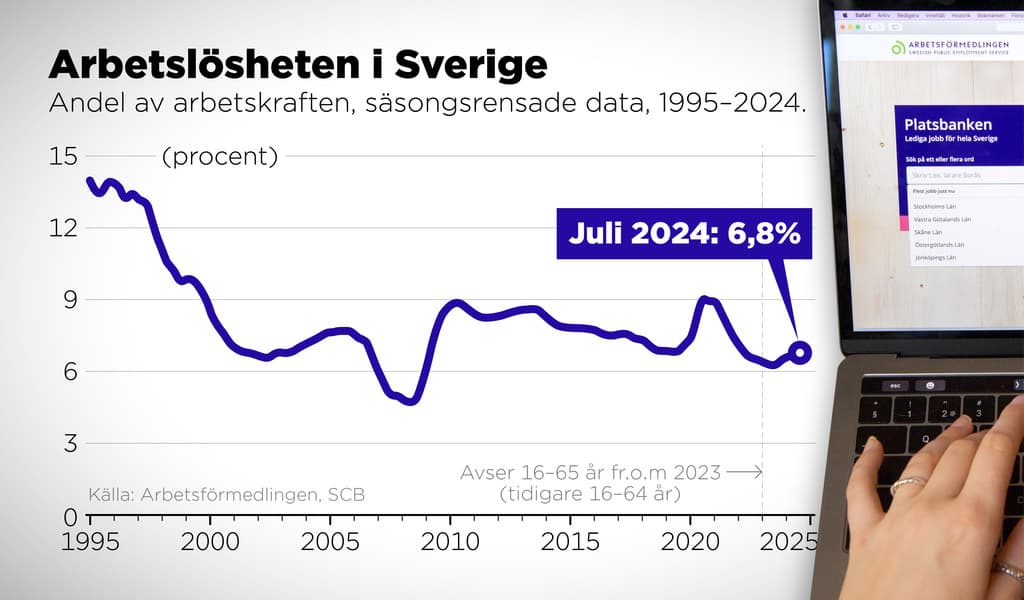In late July, nearly 357,000 people were registered with the Employment Service. This is almost 27,000 more than during the same period last year.
Unemployment has thus increased from 6.3 percent to 6.8 percent over the past year.
The labor market is still weak, continues Eva Samakovlis, analysis director at the Employment Service.
Thousands fewer jobs
In June, the number of notices of termination decreased, but now it has turned upwards again. In July, over 4,900 people were notified of termination. The corresponding figure for a year ago was just under 3,500 people.
It is mainly in the manufacturing industry, trade, and construction that the most people have been notified.
There were also significantly fewer jobs to apply for at the Employment Service, compared to a year ago. In July, there were over 64,000 newly registered jobs, which is about 37,000 fewer compared to the same period last year.
The number of long-term unemployed, people who have been without work for a year or more, continues to increase. It amounted to nearly 142,000 people in July, which is an increase of about 5,000 people over the past year.
Highest in ten years
According to the government, unemployment is the highest in ten years, excluding the situation during the pandemic. And they believe that the situation may worsen further.
This is in line with the Employment Service's prognosis.
Unemployment will rise now during the autumn, but the labor market will recover as the economy strengthens, says Eva Samakovlis.
According to our assessment, it will happen at the end of the year and at the beginning of next year. But then it will take time for the recovery.
The government measures unemployment according to labor force surveys (AKU), which are based on questionnaires from Statistics Sweden (SCB). Unlike the Employment Service, which counts the number of registered job seekers.
The government reported last week that unemployment was 8.3 percent during the second quarter and expects it to rise to 8.4 percent before falling. To then remain at a persistently high level next year.





